#Taisho Trilogy
Text

Some incredible deals on Arrow Academy titles at the last Arrow Video sale!
1 note
·
View note
Text
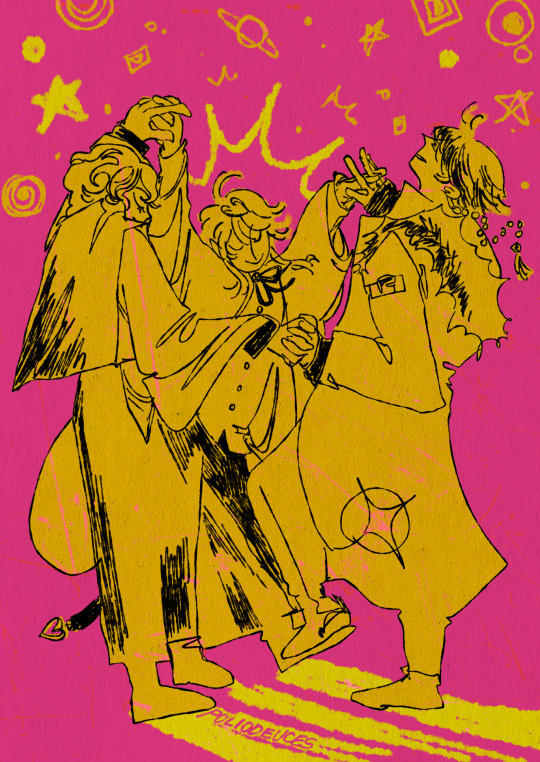
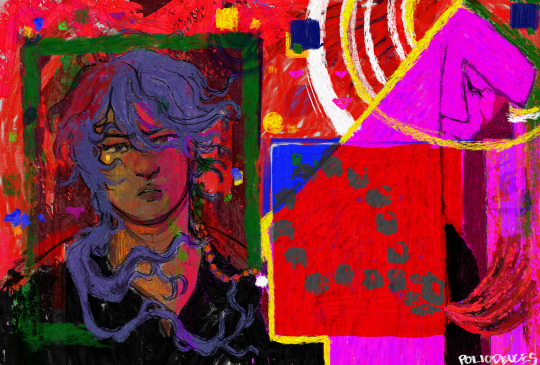

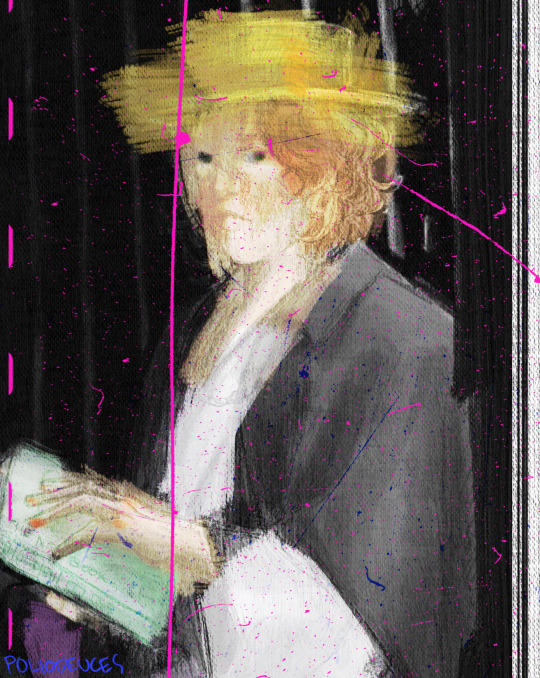
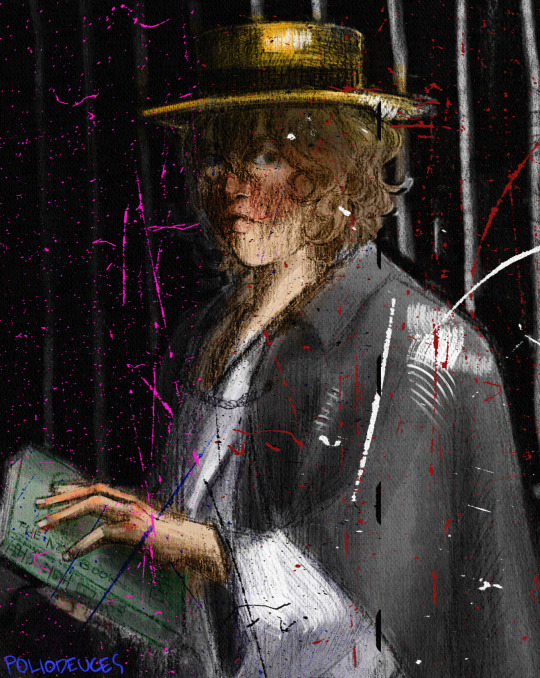


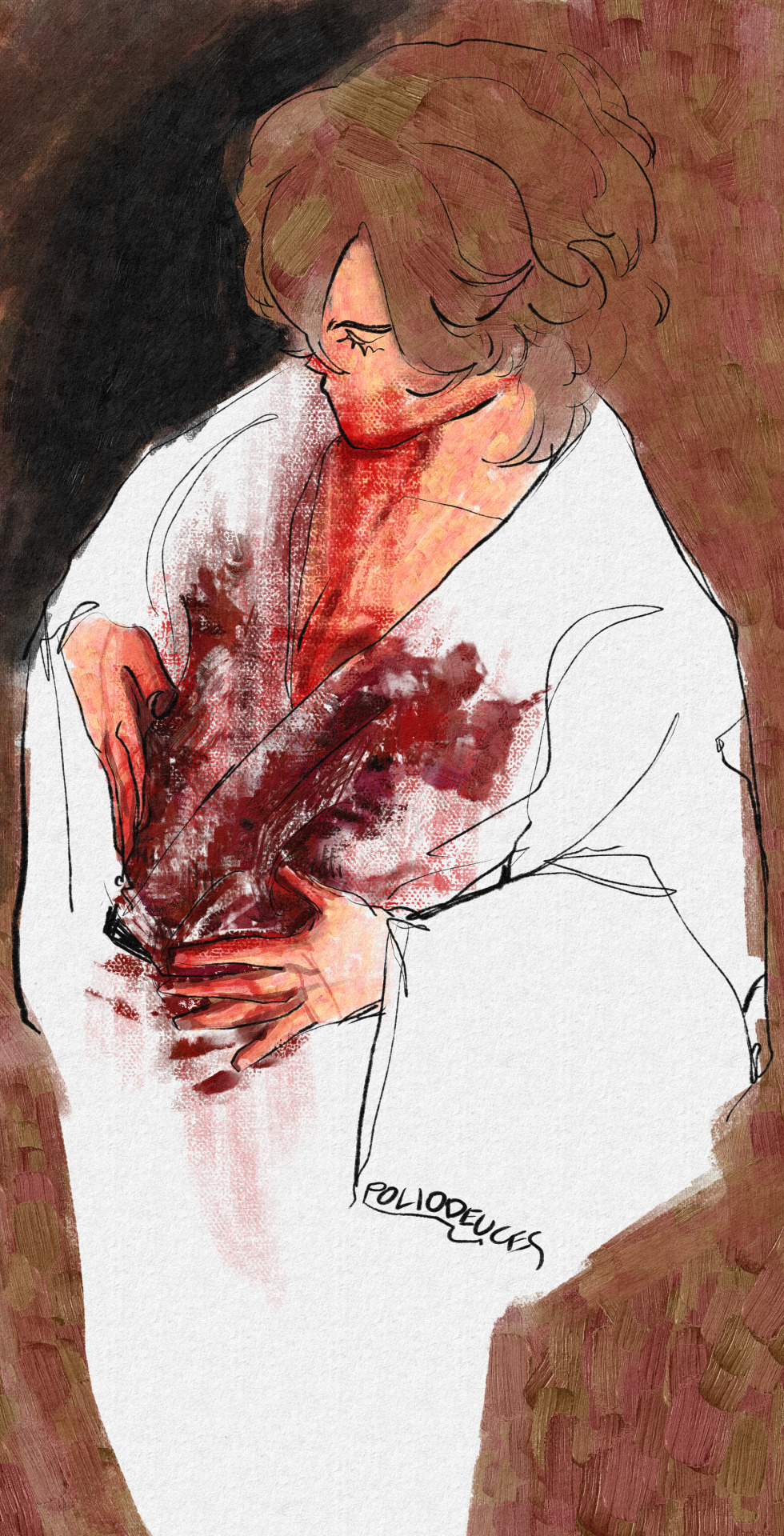

ive been drawing w a lot of red lately. more talking under the cut, like usual !
the first one was drawn at around the same time as the last BOP. i wasn't familiar w all the hysptage content, although i am familiar w the music, and, bc i have favouritism, the last cast they had for fling posse was perfect and i was super sad that we won't be seeing more of it anymore. this was partly inspired by that...i can't believe fling posse invented love. this could have been cleaner, but i liked how their bodies overlap in the sketch.
second image: otome and dice's relationship have a special place in my heart. i only wanted to draw otome as a this literal abstract figure of a mother that dice doesn't know how to understand or love in a way that matters to the both of them
third image: there were three things i wanted to achieve while sketching this, bc it's just one giant sketch that looks nice lol-- 1. bring back gentaro's boater hat 2. to pair w that inverness cape he's wearing in the block party 3. looking directly at the viewer. カンカン帽 (cancan hat) + トンビコート (tonbi coat), as they're called in japanese, really makes him feel like a scholar from the meiji/taisho era www except they would have worn black boater hats...the book he's holding is Ágota Kristóf's famous trilogy: The Notebook, The Proof, The Third Lie. fourth and fifth images are closeups.
sixth image: a long overdue fanart of the second gendice duet. i think it's really funny that the first time we're shown a work by gentaro in-universe w a major character based on dice, he made dice a murderer
seventh image: debt collection
eighth image: my real otp actually is gentaro x a lot of blood
ninth image: some vague idea abt hifugen and my favourite subject, bodies connecting together. i want these two to have a proper conversation in canon bc i wanna see them reacting to how similar they are to eo. also hifumi really needs gentaro's influence to fight hnbn w violence
#cw blood#hypmic#hypnosis mic#fling posse#ramuda amemura#gentaro yumeno#dice arisugawa#hifumi izanami#france art
122 notes
·
View notes
Text
in fact. vn recs time.
NEET Girl Date Night: very sweet very relatable very sincere very kind and that kind of kindness makes me tear up i love her so much!! among disaster girls who elicit pitying laughs or "i can fix her," it's nice to have just a person you might know in real life, just being herself, i think. i want to have neet girl date night with edd every night.
Long Since The Eschaton: a post-apocalyptic mental health love story, and whether that's romantic love or platonic is up to you, it's just as sweet either way and i sob. really it has the same appeal to me as fruits basket, where even though there's a supernatural element bringing things to the forefront, the causes of all the trauma and regrets are unmistakably grounded in the mundane.
湯圓 [tong jyun]: i'm assuming everyone is already familiar with one night, hot springs actually wait
a year of springs: a trilogy starting from one night, hot springs from a game jam, about a trio of friends, about being a trans woman, about being wlw, about being aromantic, what i love so much about npckc's game is how the difficulties and sense of alienation are so real, but in spite of that, the world is full of kind people. it's enviable to me, it's healing to me
so back to tong jyun, it's another title, much shorter and less known but still important to me, as an asian-american with a heavy lean on the american. felt.
Billionaire Lovers: i love stories where the protagonist is in a different genre than they think they are, and this is i think a game about the double-edged nature of trust. you can't reach the true ending until you've played through the other routes but i found the conclusion worth it, a well-deserved happy end
TAISHO x ALICE: funny and heartfelt and terrifying and solemn and sweet, and while i've got complaints about how a couple routes are handled, everything makes sense narratively speaking when looking in the broader context. it's a story about two people and a game about nine people, and i want to treat them all with kindness
and ALTDEUS: Beyond Chronos, and Heaven Will Be Mine, and Analogue: A Hate Story, and From Madness With Love, and Hatoful Boyfriend, and Our Life: Beginnings & Always, and basically you have to read visual novels
19 notes
·
View notes
Text
ROUND 2 INFO
Round 2 will be posted between Wednesday, November 29th and Tuesday, December 5th. It will be split between 4 sets, each set being posted on a different day. There will be a total of 64 participants (16 participants in each individual set) divided in 32 polls 8 polls in each individual set). By the end of Round 2, 32 participants will make it to Round 3 while the rest will be sent to the Shadow Realm where their souls will be tormented for eternity. Each poll will last a week. As the sets are posted, I will link them below.
ROUND 2A
Cinderella (Disney's Cinderella Animated) vs. Hatsune Miku as Cinderella (Various Songs) (Vocaloid)
Cinderella/Aschenputtel/Cendrillon (German/General European Fairytale Variant) vs. Ye Xian (Chinese Fairytale Variant)
Hamupipőke (Hungarian Fairytale Variant) vs. Settarah (The Persian Cinderella by Shirley Climo/Robert Florczak)
Cendrillon (Otogi-Juushi Akazukin) vs. Mofurun as "Mofurella" (Mahou Tsukai PreCure)
Giselle Lai (Cinderelle) vs. Cinderella (Grimms Notes)
Queen Cinderella Charming (The Land of Stories by Chris Colfer) vs. Elegant "Ella" Herringbone Coach (Disenchanted: The Trials of Cinderella by Megan Morrison)
Vasilisa "Vasya" Petrovna (The Winternight trilogy by Katherine Arden) vs. Cinderella "Cindy" Baxter (The Sisters Grimm by Michael Buckley)
Mia Basile (Cinderella the Cat) vs. La Cenerentola (La Cenerento Laossia La Bontà in Trionfo)
ROUND 2B
Ella of Frell (Ella Enchanted by Gail Carson Levine) vs. Cinderellis (Cinderellis and the Glass Hill by Gail Carson Levine)
Imogen Keegan (Damsel Distressed by Kelsey Macke) vs. Cinderella/Prinzessin (Yu-Gi-Oh! Duel Monsters & Yu-Gi-Oh! TCG)
Cinderumpelstiltskin (The Stinky Cheese Man by Jon Scieszka/Lane Smith) vs. Cinderella (Cinderella Penguin, or, the Little Glass Flipper by Janet Perlman)
Cindy (If the Shoe Fits by Julia Murphy) vs. Bronwyn Murdoch (The Prince Who Loved Me by Karen Hawkins)
Ella (Cinder Ella by S.T. Lynn) vs. Queen Cinderella (10th Kingdom)
Sam Montgomery (A Cinderella Story) vs. Katie Gibbs (A Cinderella Story: Once Upon a Song)
Ella (Happily N'Ever After) vs. Ella (The Glass Slipper)
Ashlynn Ella (Ever After High) vs. Danielle de Barbarac (Ever After)
ROUND 2C
Missy Piggy as "Lady Holiday" (The Great Muppet Caper) vs. Baby Gonzo as "Gonzo-rella" (Muppet Babies 2018)
Scrooge McDuck as "Scroogerello" (Ducktales) vs. Chuckie Finster as "Finsterella" (Rugrats)
Popeye the Sailor Man as "Cinderfella" (Popeye the Sailor Man: Ancient Fishtory) vs. Betty Boop as Cinderella (Betty Boop: Poor Cinderella)
Barbie as Cinderella (Barbie Dolls) vs. Ella (Total Drama: Pahkitew Island)
Saki Hanajima as "Cinderella-ish" (Fruits Basket) vs. Mettaton as Cinderella (Undertale)
Cendrillon (Persona of Sumi Yoshizawa / Violet) (Persona 5) vs. Cinderella (Once Upon a Crime)
Ella Brown (Just Ella by Margaret Peterson Haddix) vs. Princess Petra / Spinstress as "Spinderella" (Marvel Earth-423)
Cinderella (Cinderella by The Cheetah Girls) vs. Harper Finkle as "Harperella" (Wizards of Waverly Place)
ROUND 2D
Cinders (Once Upon a Time in Space by the Mechanisms) vs. Linh Cinder / Selene Blackburn (The Lunar Chronicles by Marissa Meyer)
Carrie White (Carrie by Stephen King) vs. Cinderella (Into the Woods)
Cinderella (Shrek) vs. Lucette Riella Britton (Cinderella Phenomenon)
Cinderella (TAISHO x ALICE) vs. Rin Hoshiora as Cinderella (Love Live)
Aisling "Ash" (Ash by Malinda Lo) vs. Ella Saturday (Witches Abroad) (Discworld by Terry Pratchett)
Euphemia "Effie" Reeves (Ten Thousand Stitches by Olivia Atwater) vs. Cinderella (Burn the Witch)
Cinderella (Cinderella Monogatari) vs. Miyo Saimori (My Happy Marriage)
Ashley Vans (A Wicked Tale of Cinderella's Stepmom / I Raised Cinderella Preciously) vs. Itsumi Tachibana (You Are My Princess)
9 notes
·
View notes
Text
Hi, welcome to my blog :D This post is here to give you some general information about the place since it's routinely flooded with reblogs.
If you're looking for a masterlist, it can be found here. Be warned, it is very sparse.
Rules can be found at the very bottom of this post. There’s only two, but they’re important lmao.
About Me and My Blog:
My name is Sam(she/her)(21). I enjoy video games(mostly story-driven ones), watching anime, reading manga and webcomics, cooking, baking, and all things cats(yes, I'm a Satan stan).
Mostly what you'll find here will be reblogs for whatever I'm into atm, but I also write on occasion and will post my work if I think it's decent enough to share. I don't write NSFW, but I do write mature themes, and some works may be suggestive. I do reblog NSFW fanfiction. If you'd like to know more specifically what content you're likely to see here, here's a list of my current fandoms(May 2022):
Writing(from me): OM, IkeSen, IkeVamp, IkeRev, IkePri. (Romantic or platonic)
SFW Romantic Fanfiction(reblogs): OM(minus Luke), IkeSen, IkeRev, IkeVamp, IkePri, TWST(minus Ortho)
SFW Platonic Fanfiction(reblogs): OM, IkeSen, IkeRev, IkeVamp, IkePri, TWST
NSFW Fanfiction(reblogs): OM(minus Luke), IkeSen, IkeRev, IkeVamp, IkePri
Some Of My Other Fandoms(I don't consume a ton of content for them on here, but we should still talk about them): Mass Effect trilogy, Taisho x Alice, Tears of Themis, Stardew Valley, Hades(video game), Fruits Basket, Kamisama Kiss, Black Clover, Wotakoi, Sweat and Soap, I Raised Cinderella Preciously(A Wicked Tale of Cinderella's Stepmom), Maid for Hire, Prince Maker, Act Like You Love Me, Prince's Royal Physician
I'd love to make some friends who are interested in the same things I am, so feel free to interact however you feel comfortable. I'm still familiarizing myself with this site, but I'm doing my best to learn how to talk to people on here.
Rules:
DNF/DNI if you're going to spread homophobia, racism, fatphobia, transphobia, or any other kind of hate.
Please do not DM me if you're a minor(under 18). I won't respond to DMs from minors. If you want to interact, let's do so either through the ask box or in comments/reblogs. On a similar note, minors, please don't talk to me about NSFW content or subjects.
I'll add more rules if I feel I have to, but in all honesty, this is meant to be a small blog for me to make friends and interact with my fandoms. I don't expect to gain enough followers that extensive rules are necessary. On a similar note, if I block you, I'm sorry, but I firmly believe in curating your online space. I'm a quick draw on the block if I see something I don't like, or that makes me uncomfortable.
2 notes
·
View notes
Text
watching first of the taisho trilogy rn and japanese surrealism is unmatched
0 notes
Text
Eight Hours of Terror

Five films into his career as a director, you can spot some emerging elements of Seijun Suzuki’s style in his EIGHT HOURS OF TERROR (1957, Criterion Channel, Plex). It doesn’t have the surrealistic touches of his later yakuza films or his TAISHO trilogy, but it has some of the kinetic energy of those films. There’s one chase scene composed of alternating tracking shots that’s very effective, as are some of the more quickly cut scenes of a decrepit bus barreling along a treacherous mountain road. Inspired by John Ford’s STAGECOACH (1939), the film follows a disparate group of passengers forced to take a bus when their train is stopped by a landslide. The characters are the broadly drawn types of a Warner Bros. melodrama from the 1930s — snooty businessman, blowhard salesman, young innocent, woman with a past. But there are also contemporary touches. The prostitute is concerned her business will dry up with the end of the U.S occupation. There’s also a convict, a veteran who killed his ex-wife and her new husband in a blackout that seems to be the result of PTSD. Relations on the bus are already strained when they’re commandeered by a pair of bank robbers, one of whom seems to be some kind of sex maniac. The melodrama can feel contrived, but it doesn’t distract from the film’s most fascinating element, the shifting alignments among the passengers based on class, gender and even race. The prostitute is looked down upon, then accepted when she helps the passengers deal with the bank robbers, then derided again when the passengers discover one of her long-term customers was a black American G.I. Most of the characters don’t have enough screen time to register strongly, but there are two standouts. As the prostitute, Harue Tone brings a great deal of depth to a woman who turns out to be one of the few decent human beings on the bus. And Nabuo Kaneko, as the convict, has a James Mason feel about him, a charming fatalism that makes him one of the most compelling characters. When they share a cigarette at the end, it’s like something out of French poetic realism or a Bogart and Bacall movie.
0 notes
Text
Retrospective: Seijun Suzuki.
Retrospective is a regular series showcasing bodies of work from an extended period of activity by filmmakers of different eras.
Devoted to the region’s film history, contributions and movements within the industries in Asia, the platform focuses on particular profiles, themes and aesthetics to allow audiences to experience past and ongoing cinematic transformations.
On the occasion of 100 years since the birth of singular Japanese director Seijun Suzuki (1923-2017), the Asian Film Archive presents a selection from his vast and colourful filmography.

The seven featured films draw attention to two significant points in Suzuki’s career. The first looks at the gritty, rambunctious crime and gangster films he made at the Nikkatsu studios in the 1960s and his collaborations with action star Jo Shishido. The four works selected from this period start from 1963, with the wild and uproarious Detective Bureau 2-3: Go to Hell, Bastards! and Youth of the Beast—the latter regarded as his breakthrough work and a key influence on the yakuza genre. 1964’s Gate of Flesh is a harsh, yet visually dynamic post-war drama. Lastly, the outrageous and stylish Branded to Kill (1967), notorious for causing Suzuki’s dismissal from Nikkatsu and subsequent blacklisting by the industry.
Making his debut in the mid-50s, Suzuki was a contract director for B-movies, quick and cheap flicks typically screened after the more expensive, prestige pictures. He overcame the gruelling conditions and meagre resources thrown at him, creatively transforming conventions into opportunities for play and experimentation, pushing the form further and further with each new film. Burned by the fallout with Nikkatsu, Suzuki withdrew from cinema. He continued to work in television and only returned to film a decade later.
The second part of this programme represents Suzuki’s comeback with the Taisho trilogy: Zigeunerweisen (1980), Kagero-za (1981) and Yumeji (1991). Produced independently, these works are loosely connected by being set during the Taisho era (1912-1926), an explosive period of artistic and intellectual activity in Japan’s history. Hallucinatory, spectral and dreamlike, these austere masterpieces—markedly different from his earlier career—are nonetheless still bursting with ideas and cinematic fervour.
Energised by the commercial and critical success of his later works, Suzuki continued to make films until the mid-2000s and even had a career as an actor. In 2017, he passed away at the age 93. The legacy of Seijun Suzuki’s body of work is that of an artist whose brilliance and verve could not be restrained. Working within the limitations of structures, his career represents a lifelong mission to reinvent the ecstatic possibilities of the filmic medium.
– Viknesh Kobinathan, Programmer
Retrospective: Seijun Suzuki runs from 6-22 October 2023 at Oldham Theatre. This programme is held in conjunction with Japanese Film Festival Singapore, with support from the Japan Foundation.
Asian Film Archive (affiliated to AMIA, FIAF, SEAPAVAA)
Retrospective: Seijun Suzuki.
06-22 October 2023
National Archives Singapore 1 Canning Rise Singapore 179868
Singapore, Singapore
#asian film archive#AMIA#FIAF#SEAPAVAA#cinematographic creation#filmmaking#Japanese Film Festival Singapore#Japan Foundation#filmography#singapore#world day for audiovisual heritage#27 october
0 notes
Text
AFTER FINALS
# celine et julie vont…
# suzuki taisho trilogy
# rocco and his brothers
# middlemarch by eliot
# a house for mr biswas
# the makiaoka sisters
1 note
·
View note
Photo


Seijun Suzuki's The Taisho Trilogy : Zigeunerweisen 1980, Kagero-za 1981, Yumeji 1991 - 2017 Arrow Edition
#Taisho Trilogy#Seijun Suzuki#鈴木 清順#Japanese director#Zigeunerweisen#Kagero-za#Yumeji#Arrow#1980s#1990s#Showa#昭和#blu-ray#blu-ray packaging
113 notes
·
View notes
Photo



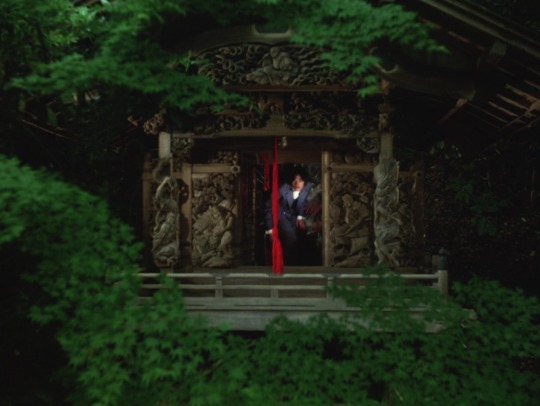
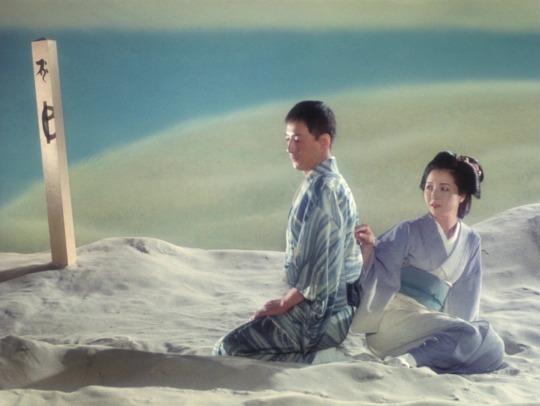

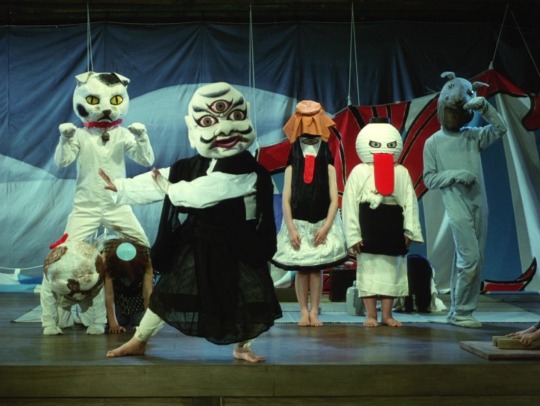


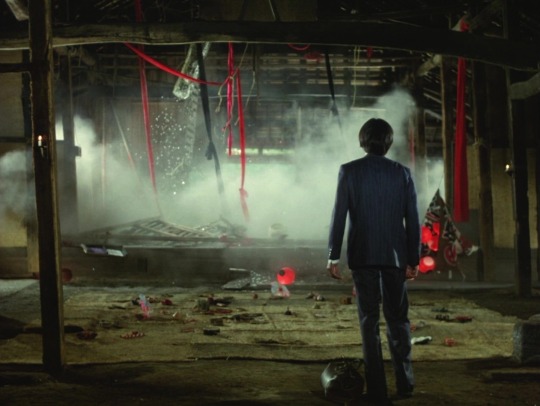
Kagerō-za (1981, Seijun Suzuki)
陽炎座 (鈴木清順)
Also known as: Heat-Haze Theatre / Heat Shimmer Theater
4/17/20
#80s#Kagero-za#Seijun Suzuki#Taisho Trilogy#Japanese#Yusaku Matsuda#Michiyo Yasuda#Mariko Kaga#Katsuo Nakamura#Yoshio Harada#experimental#surreal#dreams#ghosts#jazz age#Taisho#theater#playwrights#double suicide#afterlife#identity#temple#absurd#kabuki#ero guro
12 notes
·
View notes
Text
Taishō Trilogy of Seijun Suzuki

As a salaried director at Nikkatsu, Japanese filmmaker Seijun Suzuki has been making crime movies for decades. He has directed around 40 movies from 1956 to 1967, of which Tokyo Drifter and Born to Kill are considered the most acclaimed. In a later attempt to reignite his career after splitting paths with Nikkatsu and veer off to the new ways of expression and stylistics, Suzuki started working on surrealistic feature film Zigeunerweisen becoming the first part of unformal Taisho Trilogy: Zigeunerweisen, Kagero-za, Yumeji. The three films are not linked with any similarities in the plot but set in the same period of emperor Taisho ruling the nation. It was the time of 1920-1930s. All films resemble hectic dreams and bear unmistakable visual similarities. The films have been meant to create the new stylistics for Suzuki developing his old strife to produce the shots of supreme beauty to strike not less than Godard’s shots used to do. Taisho Trilogy is an example of films lacking the coherence, yet remaining unforgettable with their quixotic and wild visuality.
Zigeunerweisen (ツィゴイネルワイゼン) - 1981

From my point of view, the best way to get a glimpse in the Taisho Trilogy is to watch the last part of it Yumeji. The last film encapsulates all the achievements of the trilogy. Comparing with Yumeji, Zigeunerweisen is almost impossible to comprehend. The film employs riddles in abundance, and the hints given can unlikely help to solve quite a few of them. In a surrealistic way, Suzuki’s tale shows the relations between two former co-workers Nakasago (portrayed by Yoshio Harada) and Aochi (Toshiya Fujita) who developed affairs with the wives of each other (at some point, Nakasago even suggests to exchange the wives). The story is ambiguous and not very coherent as Suzuki doesn’t bother himself to show the things in any sort of logical way or order.
In fact, the film is set in several dimensions, and it never becomes clear whether Nakasago has died or not, and whether Koine and Sono (both played by gorgeous Naoko Otani) are the same women or two different. We don’t really get a clear idea of why Nakasago killed a woman and if he actually killed her or not. The behaviour of a spooky girl also remains mysterious and unclear. Is she sort of ghost or she has bridged some spiritual connection with the world of death? We never learn it for sure. Moreover, we don’t even know where is the reality or dream or fantasy. Suzuki does his best to confuse the viewers with his surrealistic images and bizarre storytelling.
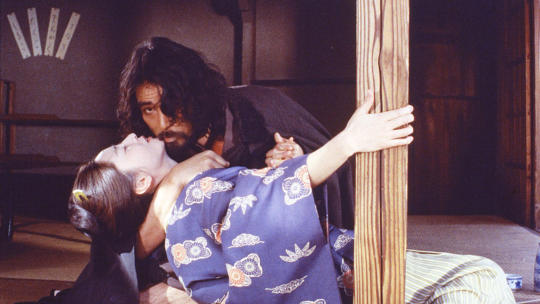
What we know for sure, is that Zigeunerweisen is the title of a vinyl record that Nakasago and Aochi used to listen. It has some gypsy tunes on it. Somehow, the record is used as the spiritual connection between Nakasago who dies and the outer world. Also, there are some references making to think Suzuki paints some ties with the political situation in Japan in the 1930s. The blind kids might symbolize of Japanese right forces getting insane prior to invading Manchuria (though, it is too obvious for Suzuki to be entirely sure that was an original intention). There is also a connection between the fact that Aochi is a German language professor, the relations of Japan and Germany and the title of record taken from German - Zigeunerweisen. And once again, this is just a guess as it never becomes clear what the author implied.
Suzuki uses Aochi as a sort of symbol of his audience: a confused man is trying to follow the story and understands very little from his friend’s behaviour. The ending is bizarre just like the whole movie, and we are left with no answers, as well as Aochi. However, giving the answers is not something the film has been made for. This is entirely visual work, and it is drastically important to pay attention to the shot, mise-en-scène, camera work and usage of light. Zigeunerweisen is a visually appealing film, and many shots are just like gorgeous paintings we enjoy. The matter of greatest importance for Suzuki was to fully realize and utilize his potential in elaborating the exquisite ways of artistic impressions. Making Zigeunerweisen, he made up his mind for creating a fresh visual language. He comes up with the material which is confusing, but it goes without a doubt Zigeunerweisen can be hardly compared to anything else. Watching Zigeunerweisen, at some point you realize there is probably no way to twig what is real and what is just irony, mockery, dream or fantasy. Nevertheless, the visual style is so solid and brilliant that it starts seeming the only way to accompany the frantic twists of the plot which remain spooky and incognizable just like the vinyl record or tunnel we see several times in Zigeunerweisen.

Kagero-Za (陽炎座) - 1981
The second film of Taisho Trilogy clarifies several points I remained dubious about after watching Zigeunerweisen and Yumeji. This trilogy is an example of substantially visual cinema where the logic and storyline are abandoned, in order to prioritize the importance of the mood and shocking stylistic beauty of the shots. Seijun Suzuki used to say “I make movies which make no sense and no money”, and this is true. Watching Zigeunerweisen, I was struggling to understand where do the twists of plot and expression lead and what is the idea behind it. Kagero-za or Heat-Hazed Theatre makes it transparent there was apparently something Suzuki implied, but it would remain incognizable as there are numerous ways to interpret the tale.
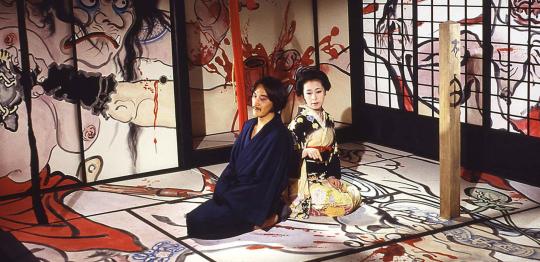
Kagero-Za is another psychological surrealistic tale in this trilogy. The plot is a formality as it never gets too clear. We follow the story of playwright Matsuzaki (portrayed by Yusaku Matsuda) who encounters his different mistresses, one of whom appears to be the wife of rich businessman Tamawaki (Katsuo Nakamura) who wants protagonist dead. Heroes pass away and appear again. In Zigeunerweisen I was still wondering what that supposed to mean, but with Kagero-Za I realized these are the actual fantasy ghosts who might bear symbolic meaning. The protagonists talk in one location, and in the next shot show up somewhere else. They jump from topic to topic, the dialogues are bizarre making both conversations and plot incoherent - though, this is something Suzuki has been trying to achieve.

Kagero-Za resembles a deranged dream or plot of a kabuki play. At some point, we actually see the events might be nothing but the new play of Matsuzaki who is seeking for the new story. We see awkward scenes on the theatre stage, and playwright observes them too. Perhaps, the whole story is like that - just a fantasy of Matsuzaki told in a surrealistic way.

What is Suzuki brilliant in is coming up with the fresh ideas of his shots. Dozens of shots require studying and might be considered art objects. The usage of vivid traditional paintings Suzuki employs is striking and spectacular, making the film’s visuality pretty impressive. Camera work and montage also follow the lead of Suzuki’s bizarre visual code. Again and again, Suzuki creates mise-en-scene of stunning beauty. The scenes and shots are often not linked to each other with any sort of explanation, but they are perfect with no respect to the story. Kagero-Za is not a film of non-linear plot and not a non-plot film either. It is an attempt to reject any sort of dictate created by traditional view on the films and necessity of coherent plot and background. Highly experimental and visually appealing work of Suzuki is meant to make neither sense nor money. But the aesthetics of Suzuki should be acclaimed as something rare and remarkable. This aesthetic will lead him to the third and last film of the trilogy Yumeji which I regard as the best part of Suzuki’s surrealistic Taisho films.

Yumeji (夢二) - 1991
The last film of Taisho trilogy in a very surrealistic tone tells a story of Japanese painter and poet Takahisa Yumeji (1884-1934) encountering several mistresses and his rival artist Gyoshu Inomura who is arguably more talented than Yumeji (portrayed by Kenji Savada). Throughout the account on the screen, we get a glance on the psychological and art struggles of the painter who is seeking the perfection and inspiration for his paintings.

The tantalizing tale is enhanced with numerous surrealistic forms, characters, images and entire scenes. It is also impossible to follow the stream of the tale before we get an idea we bump into the artistic fantasies of Yumeji, and the line between the death-life and reality-fiction is painted by Yumeji himself. The bizarre work of camera moving from the left to the right, and back again and showing the scenes with unusual composition and angles illustrate this far-fetched definition of different dimensions which unite and mix up in Yumeji’s mind. The story contains both surrealistic scenes and detective-like motif, though It is not entirely clear whether Wakiya (played by Yoshio Harada) has been actually murdered or not, and it is unclear if the whole story ever took place in the reality. The endless riddles bridge the gap between Suzuki and Buñuel with Robbe-Grillet.

What is certain is that the film tells about Yumeji’s perception of the art and women which are pretty much related in his life. There is no mood for art without passion Yumeji chases women with. He encounters the most beautiful ladies and seduces them, but he doesn’t love them in a human way. His fetish is about their postures, outfits, behavoiur is utilized for the ideas of paintings, and the women’s beauty for him is nothing but inspiration for art and poetry. He feeds himself on their boundless sexuality and allure like a vampire, and he is so addicted to their beauty that women, in fact, define his art. We see Yumeji is in the relationships with a woman who loves him, but the artistical mindset makes him seduce the other women as potential models or nudies.

Seijun Suzuki shows the gorgeous women and their perfect bodies in abundance to immerse himself and viewers in Yumeji’s fetish (and probably the director’s fetishism as well). The scenes with Tomoyo (played by Tomoko Mariya) and Hikono (Masumi Miyazaki) are charged with the enthralling sexuality the female protagonists radiate. They are frequently shot as the paintings, and this images strike with the boundless beauty Yumeji and the viewers fully immerse into. This is a very sexy and surreal fantasy which resembles Alain Robbe-Grillet’s L'Eden et après in an artistic way and Trans-Europ Express by the manner of storytelling. The usage of aggressive montage and dense colours reminds of the style of La Chinoise by Jean-Luc Godard.
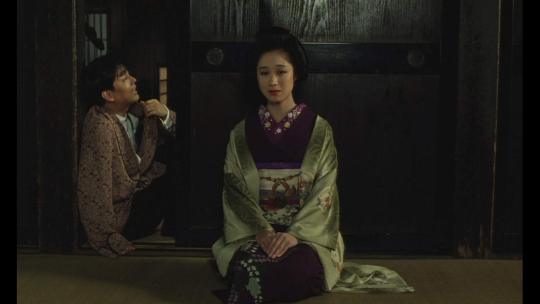
To sum up, Yumeji is a set of fetish fantasies made like a collection of his paintings he could have possibly completed. Every shot is like a painting where mise-en-scene stuns with beauty and bizarre mesmerizing power. The story is hard to follow and riddles might be very confusing, but it can be interpreted in many ways. Yumeji is important and striking as an art object and surrealistic experiment, yet there is probably no way to delve too deep into the film: it is much better to enjoy the sophisticated shots and the beauty of Yumeji’s mistresses portrayed by Tomoko Mariya, Masumi Miyazaki, and Reona Hirota. The last but not the least thing is the usage of music. This is the film Shigeru Umebayashi has written his brilliant and sublime music theme Yumeji for. Later the same theme would find international acclaim after being remarkably used in the film of Wong Kar-wai In the Mood for Love.
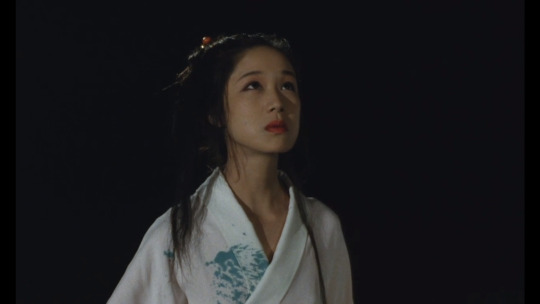
#yumeji#seijun suzuki#鈴木 清順#takehisa yumeji#tomoko mariya#masumi miyazaki#Kenji Savada#kagero-za#zigeunerweisen#taisho trilogy
23 notes
·
View notes
Photo

Finally got a copy of this.
1 note
·
View note
Text
Vintage Japan style or Taisho Roman
That's the aesthetic that you can see in now popular mangas/animes like 'Demon Slayer' or 'Toilet-bound Hanako-kun'


Or my beloved anime/manga series ''Sayonara zetsubou sensei ''

It's a Taisho era fashion style, which is a mix of traditional Japanese fashion and a western and military elements. Some art and fashion prints also influenced by art deco/ modern art style (or, on the opposite, the art deco is originally inspired by oriental culture).
Before that was the Meiji era, which was the start of interfering of western fashion into Japanese culture, but mostly was used by officials and military.
So if you see:
Kimono/hakama over a tall necked western shirt or military jacket
Kimono plus lace up boots (both boys and girls)
It looks like Edo drama village but has some simple electricity (see 'Demon Slayer'), trains, etc.
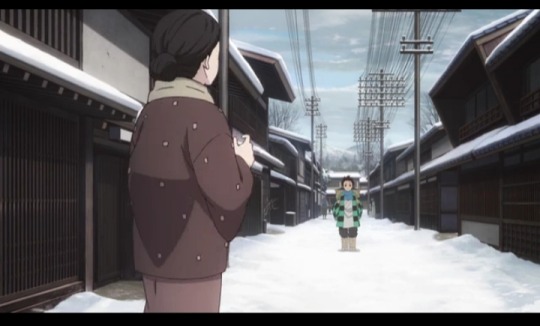
Cute maid suits like kimono plus western apron and leather boots instead of geta, aka Taisho maid (as seen on Love Nikki)
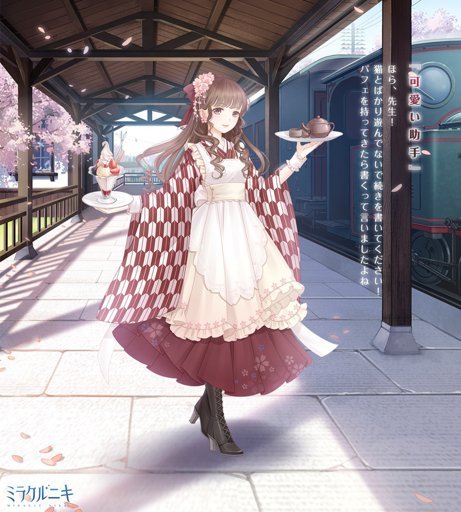
A military style cap in school uniform for boys (though it's said that some use it nowadays too)
Then welcome to the Taisho era style romance.
The term "Taisho Roman" refers to the cultural stylings of the Taisho Period of Japanese history (1912-1926), combined with the shortened form 'romantic'. An appropriate English translation might be "romantic vintage". (Source: https://bellecon.fandom.com/)

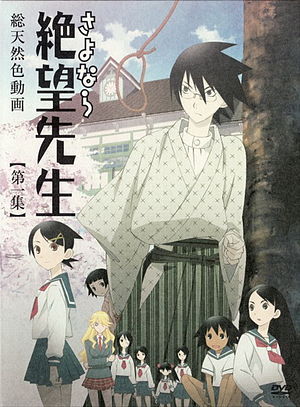
Sensei is wearing the hakama over western shirt and lace-up boots. Classic. But the anime itself isn't set in the era, but it's visual's have that style.
The Taisho has also been called Japan’s Jazz Age. Following the modernising of the Meiji it was characterised by the phrase ‘ero-guro-nonsensu‘ — eroticism, grotesquerie, nonsense. Tokyo spawned its own café society, literacy was on the up and men and women achieved more political and personal freedom than ever before. The period also took in such momentous events as siding with the Allies in WW1, the Great Kanto Earthquake of 1923 and the vote being given to all males over twenty-five in 1925. This was a time of tumultuous change.(Source: https://blog.alltheanime.com/the-taisho-trilogy/ )
If you know any more examples of manga/anime, inspired by Taisho Roman, please share.
The ones I found yet, except for aforementioned ones:
Taishō Baseball Girls (is set in the era but somehow I don't feel the vintage vibes)
Ojousama no untenshu (manga)

Koi tsukiyo no himegoto (manga)

Episode 11 ''Bakeneko'' of ''Mononoke TV''.

#taisho era#japan#anime#demon slayer#toilet bound hanako kun#sayonara zetsubou sensei#fashion#history#vintage
482 notes
·
View notes
Photo
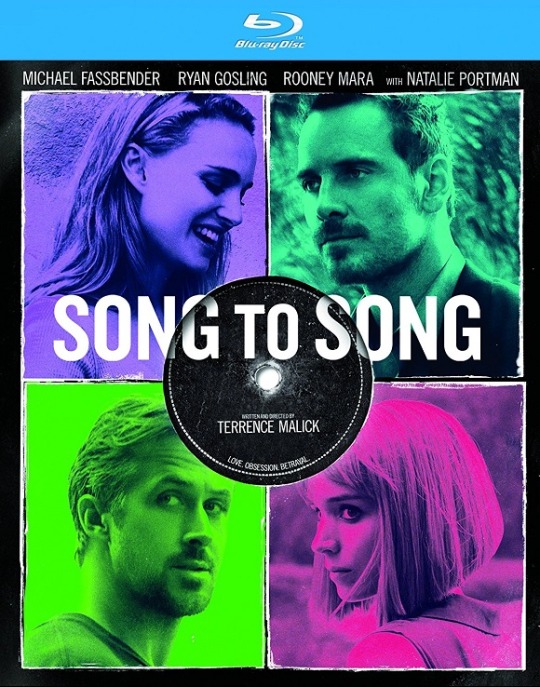
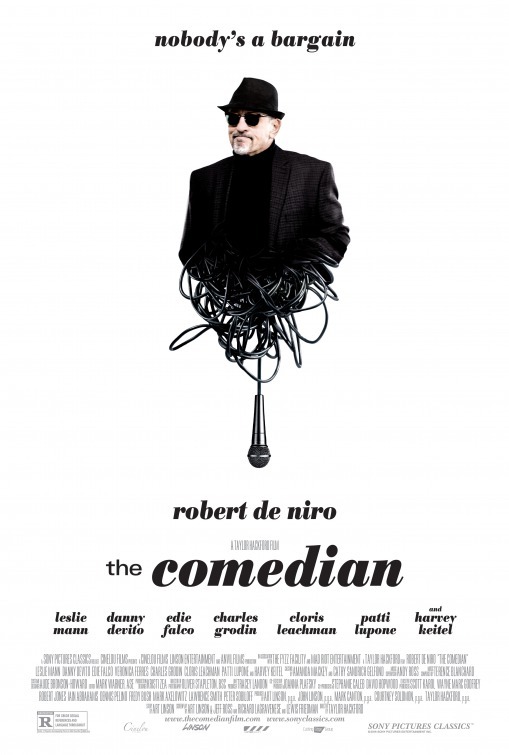
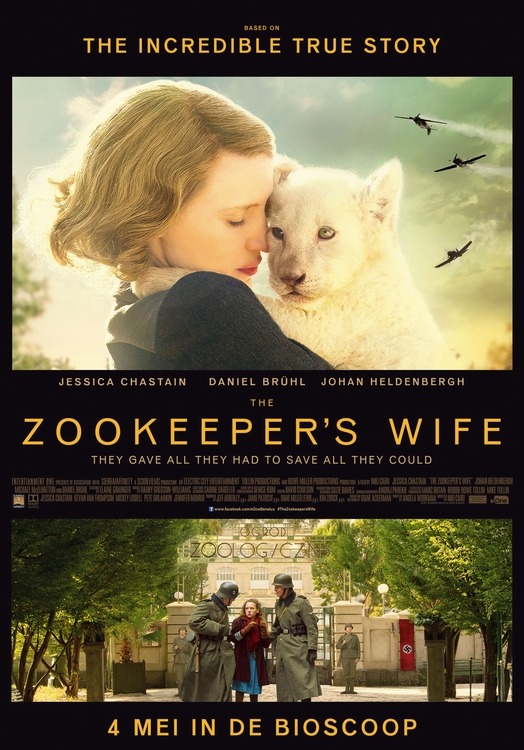


Here’s what’s coming out on Blu-ray this week.
1 note
·
View note